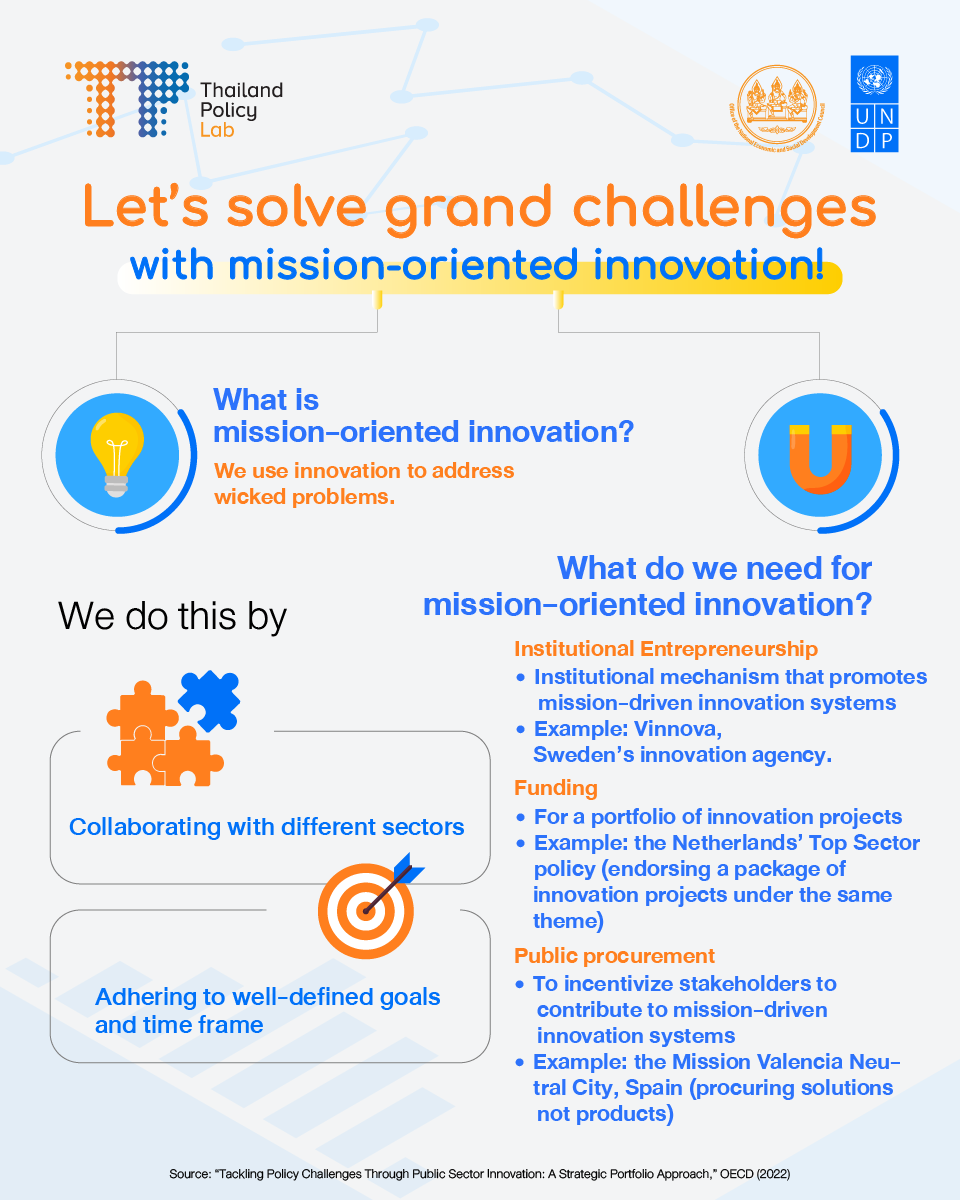The world of the 21st century is marked with “wicked problems.” These are multifaceted challenges that are complex, constantly evolving, and always interlocked with one another instead of developing in isolation. Think of climate change, for example. Born out of the global capitalist drive to produce and consume destructively, climate change wreaks havoc across the Global South. The climate catastrophe does not only result in ecological degradation, it also ushers in new waves of disaster displacement, intensifies housing insecurity, and exacerbates socio-economic inequality. This is but one of many wicked problems that threaten the environmental, economic, and social conditions of the world.
A complicated question requires more than a single, old-school answer. Now many governments are now turning to innovation systems for fresher, newer takes on solutions. Hence enters the idea of “mission-oriented innovation” (MOI).
The MOI is an innovation policy that goes beyond mere calls for support of innovative initiatives. It leverages innovation to address wicked problems with well-defined objectives, or “missions.” Developed as a response to challenges, missions consist of a package of policy-regulatory measures-projects that tackles grand challenges. A wide range of projects is funded in order to increase chances of success in problem-solving. Apart from a variety of interventions, diverse crowds of change makers also play a crucial role in the MOI. The innovation cycle — from research and development (R&D) to monitoring and evaluation — requires coordinated efforts from different sectors such as the government, the private sector, or civil society organisations (CSOs).
There are 3 pillars that support the work of the MOI: 1) institutional entrepreneurship, 2) funding, and 3) procurement.
Institutional Entrepreneurship
Institutional entrepreneurship refers to the institutional mechanism that nurtures innovation systems, collaboration with stakeholders, and experimentation. It could be, for example, a policy lab or a government agency that supervises the growth of innovation. In Sweden, an innovation agency called “Vinnova” was specifically created to promote sustainability through domestic innovation systems.
Vinnova plays 2 crucial roles: coordinator and funder. The agency facilitates cross-sector collaboration in both domestic and international scenes. It also funds research and projects that touch on different areas of life, such as food systems, mobility, and digital transformation.
Funding for multiplicity of innovation projects
The MOI requires a flexible funding system that opens doors for a variety of innovation projects, instead of focusing all financial efforts on a single solution. The Top Sector policy from the Netherlands is an example of an institutional structure that allows several innovation projects to take place under a common mission theme. The Top Sectors, or prominent sectors in the Dutch economy and innovation research, have 4 grand challenges (energy transition & sustainability; agriculture, water & food; health & healthcare; and safety) and 25 missions to carry out in order to realise their objectives. The Top Sectors cooperate in the development of the Integral Knowledge and Innovation Agendas (IKIAs), or strategic agendas that lay the blueprints for innovation programs under each mission.
Public procurement
Public procurement can generate attention and enthusiasm to participate in innovation systems for public causes. This creates a win-win situation for both public and private sectors. The public sector is able to recruit potential stakeholders and gain additions to their portfolio of solutions, whereas private parties are now granted funds and opportunities to experiment with their projects.
An example of a symbiosis between public procurement and innovation systems is the Mission Valencia Neutral City. In order to reach its climate neutrality goal, the City Council uses a procurement framework that encourages participation from the local government and the community. Each party can select up to 3 missions from a list of potential projects. Instead of forcing the government to look for specific products or services, this approach helps the decision makers keep eyes on their problems and embrace all possible solutions that will come into their direction.
Sources:
“Public Sector Innovation Facets: Mission-oriented innovation,” OECD (2021)
“Tackling Policy Challenges Through Public Sector Innovation: A Strategic Portfolio Approach,” OECD (2022)
“Strengthening innovation,” Vinnova
“Mission Driven Top-Sector Policy,” OCED
“Valencia greenlights its first mission to achieve climate neutrality by 2030,” Mission Valencia 2030

